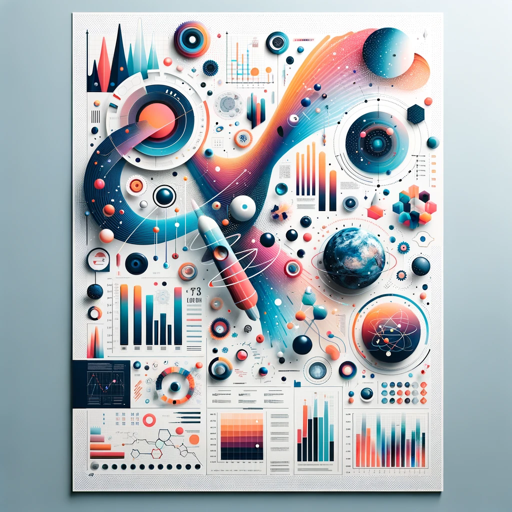Mathematics Research Assistant - AI-powered tool for math support

Assists with PhD level math research, offering explanations and methodologies.
AI-driven mathematics research and problem solving
Can you help me understand this complex math theory?
How can I apply this mathematical concept practically?
I need a detailed explanation of this equation.
Guide me through this mathematical research methodology.
Get Embed Code
Introduction to Mathematics Research Assistant
Mathematics Research Assistant is an AI-driven tool designed to support advanced mathematical research, problem-solving, and exploration of complex theories. Its main purpose is to offer tailored guidance for PhD-level researchers, students, and professionals working in mathematics and related fields. This tool is capable of breaking down intricate mathematical concepts, offering explanations, and suggesting methodologies for solving high-level problems in fields such as algebra, analysis, topology, number theory, and applied mathematics. A key feature of this assistant is its ability to adapt explanations based on the user's knowledge level. For example, if a user is working on a research problem involving algebraic geometry, the assistant can help define abstract concepts such as schemes, cohomology, or sheaf theory. It can then assist the researcher in identifying key results in these areas or suggest steps for proving certain theorems, offering examples from well-known problems to illustrate complex theorems. This adaptability makes it a powerful resource for tackling difficult mathematical challenges. Powered by ChatGPT-4o。

Main Functions of Mathematics Research Assistant
Problem Solving and Proof Guidance
Example
A PhD student is working on a difficult proof in combinatorics and seeks guidance on using generating functions. The assistant helps by explaining the relevant theory and suggesting how to apply generating functions to derive recurrence relations.
Scenario
In a scenario where a user is stuck on a proof for a combinatorial identity, the assistant could walk the user through the process of creating a generating function for the sequence in question, helping to derive a closed-form expression or uncover useful properties of the sequence.
Explaining Mathematical Concepts
Example
A mathematician working in topology needs a refresher on the concept of homotopy equivalence. The assistant provides a clear explanation, including examples of homotopy equivalence between different types of topological spaces, such as between a torus and a circle.
Scenario
In teaching or preparing lecture notes, a professor might use the assistant to explain abstract concepts like homotopy equivalence or fundamental groups with concrete examples, helping students understand these key topological ideas through diagrams or algebraic formulations.
Research Methodology Suggestions
Example
A researcher working in number theory is looking for advice on how to approach problems involving modular forms. The assistant offers suggestions for leveraging congruences, L-functions, and Hecke operators in the analysis.
Scenario
When embarking on a new research project in number theory, a researcher might ask for methodologies on studying modular forms, and the assistant could suggest specific techniques, provide references to key papers, or propose a pathway for finding new results.
Mathematical Software and Tool Recommendations
Example
A student needs help selecting software for symbolic computation in algebraic geometry. The assistant suggests tools like SageMath or Macaulay2, outlining their functionalities and advantages for solving polynomial systems.
Scenario
A graduate student working on computational algebra might consult the assistant to find the best software for performing Gröbner basis computations, receiving detailed recommendations for software and tutorials on their use.
LaTeX and Writing Assistance
Example
An academic is writing a research paper and needs help formatting complex mathematical expressions using LaTeX. The assistant offers tips on the most efficient ways to typeset specific symbols and environments for theorems or proofs.
Scenario
While preparing a paper for a journal submission, a mathematician might ask for help generating well-formatted LaTeX code for a matrix-heavy section of the work. The assistant can provide templates and troubleshoot common LaTeX errors.
Ideal Users of Mathematics Research Assistant
PhD and Graduate Students
Graduate students, especially those working on dissertations in advanced areas of mathematics, would benefit from using the assistant to help guide their research and provide clarity on difficult topics. They can ask for explanations of theoretical concepts, guidance on constructing proofs, or advice on research methodologies.
Mathematics Researchers and Academics
Academics and professional researchers in fields like pure or applied mathematics can utilize the assistant for exploring complex theorems, verifying proofs, and getting suggestions on novel research directions. The assistant can also provide insight into lesser-known techniques that may be useful for tackling unsolved problems.
Professors and Educators
Professors designing courses or preparing lecture materials on advanced topics like differential geometry or algebraic topology can use the assistant to create clear, illustrative explanations. It can help generate examples, diagrams, and explanations to aid in teaching complex mathematical topics.
Applied Mathematicians and Engineers
Those applying mathematics in engineering, computer science, or other applied fields might seek help from the assistant in solving differential equations, optimizing systems, or modeling complex phenomena using mathematical tools. The assistant can suggest the best computational methods or software for specific applied tasks.
Undergraduate Students in Advanced Courses
Undergraduates taking advanced mathematics courses, such as those in abstract algebra or real analysis, may use the assistant for additional support in understanding difficult topics or practicing proofs. The assistant can break down abstract material into more digestible components, aiding their learning process.

How to Use Mathematics Research Assistant
1
Visit yeschat.ai for a free trial without login, also no need for ChatGPT Plus.
2
Prepare your mathematical queries or research topics. Mathematics Research Assistant specializes in providing in-depth theoretical and practical explanations, so it's best to have a clear idea of what you want to explore.
3
Use detailed questions when asking for help with complex problems. The more specific you are, the more precise and helpful the guidance will be.
4
Engage with the assistant to clarify concepts, get suggestions on methodologies, or receive step-by-step problem-solving guidance, especially suited for PhD-level research.
5
Explore common mathematical topics like algebra, calculus, or number theory, or ask for deeper insights into advanced fields such as topology or mathematical logic for comprehensive support.
Try other advanced and practical GPTs
ElevenLabs ∞ Générateur de Voix IA & Free Voice AI
Bringing Text to Life with AI

Prayer Time
Craft Personalized Prayers with AI

Poster Pro
AI-powered poster creation for science

Title and Keyword Generator
Enhance discoverability with AI-powered metadata

GitMind Mindmap
AI-powered tool for structured thinking

PDF Translate
AI-driven translations with layout preservation

Mathematical Physics
AI-powered insights for advanced physics problems

Generate Recipe Prompt ~ Blay
Craft Your Drink with AI Power

Quantum Computing Problem-Solver
AI-powered solutions for quantum computing challenges

Flow Chart Maker AI
Effortless Flowchart Creation with AI

100 percent human article writer
Empowering your words with AI precision

Story Generator
AI-powered story creation in seconds

Five Detailed Q&A About Mathematics Research Assistant
What type of mathematical problems can the Mathematics Research Assistant help me with?
The assistant can tackle a wide range of topics, from basic algebra and calculus to more advanced areas like topology, real analysis, and mathematical logic. It's especially effective for PhD-level research, where in-depth explanations and theoretical insights are needed.
Can the Mathematics Research Assistant help me with academic writing and research?
Yes, it can assist in structuring mathematical arguments, suggesting research methodologies, and providing insights into complex topics. It can also help review or refine mathematical proofs and theoretical frameworks for academic papers.
Is Mathematics Research Assistant useful for solving complex mathematical proofs?
Absolutely. It provides step-by-step guidance in constructing or understanding proofs, helping break down abstract concepts into manageable parts. This makes it especially valuable for research-level mathematics where detailed understanding is critical.
How does Mathematics Research Assistant handle interdisciplinary topics?
The assistant is adept at connecting mathematics with other fields such as physics, computer science, or economics. It can help explore the mathematical foundations of interdisciplinary subjects and offer clear explanations on how mathematical models apply in those fields.
Can I use the Mathematics Research Assistant to learn new mathematical concepts?
Yes, it can be an excellent resource for learning. It offers detailed explanations of mathematical theories, concepts, and methods, tailored to your current knowledge level. Whether you're a beginner or a researcher, the assistant adapts to your learning needs.
